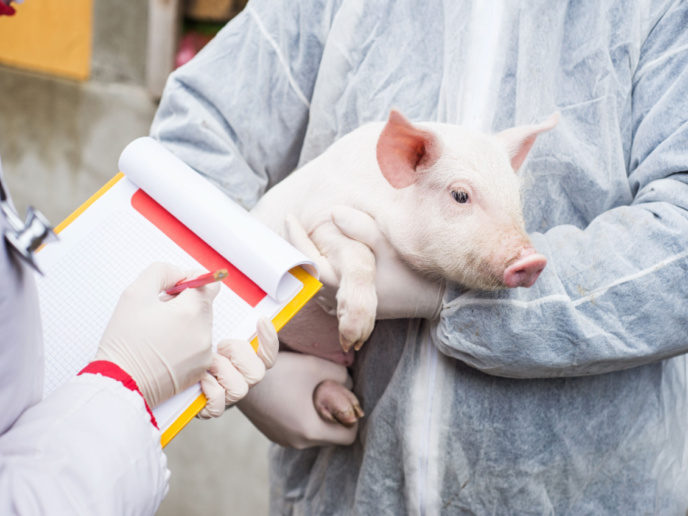Understanding host-pathogen-environment interactions of Streptococcus suis
Streptococcus suis (S. suis) is a bacterial pathogen causing conditions including acute sepsis, meningitis, endocarditis and pneumonia in young pigs. It is also frequently associated with porcine respiratory disease complex, a major cause of pig mortality. Further, like the severe acute respiratory syndrome coronavirus 2 (SARS-CoV-2) that causes COVID-19, S. suis is zoonotic, one of many pathogens that can be transmitted from animals to humans. The EU-funded PIGSs(opens in new window) project is enhancing understanding of S. suis pathogenicity, enabling development of vital vaccines and surveillance tools.
Streptococcus suis and the antibiotics conundrum
Outbreaks of pathogenic S. suis infection are very common. PIGSs showed that, in nursery units on affected European farms, 3.3 % to 4 %(opens in new window) of animals had S. suis invasive disease. This costs the industry millions, not to mention the economic costs of human disease. A recent study(opens in new window) in south-east Asia, where cases are highest, reported the economic costs of human disease to be millions of euro annually due to direct and indirect healthcare costs and lost productivity. To date, no licensed cross-protective vaccine(opens in new window) is available in Europe. According to project co-coordinator Jerry Wells of Wageningen University and Research(opens in new window) in the Netherlands, “the lack of effective surveillance methods and vaccines has led to inadequate prevention and global reliance on widescale antibiotics use. This leads to increased antibiotic resistance which can spread to other pathogens infecting animals and humans, and increased antibiotics in human foods.”
Harnessing the polymerase chain reaction and bioinformatics tools
Untangling the S. suis disease mechanisms is a challenge. Only a subset of strains is associated with disease leading to severe morbidity and mortality. “Using a global collection of around 2 000 non-pathogenic and pathogenic strains, PIGSs identified genes that are highly conserved in pathogenic strains but absent in the rest. These markers were used to develop quantitative polymerase chain reaction(opens in new window) (PCR) assays that rapidly amplify small pieces of DNA into millions of copies. The PCR assays can be used for surveillance of pathogenic isolates on farms,” explains Wells. This will also enable targeted prevention and treatment strategies, for example of sows transmitting pathogenic strains to their offspring. Finally, the team used bioinformatics tools to screen for conserved antigens (protein sequences conserved in all pathogenic S. suis strains) and elicit protective antibody responses in pigs. The team is currently assessing the best way to enhance this response and developing assays to assess the induced protection of these vaccines in future trials.
Mechanisms, risk factors and vaccines
The PIGSs project may be wrapping up, but lots more insight is expected from ongoing experiments and analyses. The team is currently elucidating the pathogenic strains’ mechanisms of survival or transmission. In addition, Wells notes that “a large epidemiology study is still in progress, from which we hope to learn more about the factors on different farms that increase S. suis disease risk. Our ongoing vaccine trial in piglets could be a game changer, revealing new vaccine strategies for young piglets.” PIGSs has greatly increased understanding of host-pathogen-environment interactions for S. suis. This will support development of more effective vaccines and control strategies, as well as widescale surveillance on farms, to reduce or eliminate the disease.







